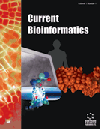
Full text loading...

Bacterial and viral infections have been linked to an increased risk of coronary heart disease (CHD), potentially through natural killer (NK) cell-mediated innate immune mechanisms. This study aimed to integrate single-cell RNA sequencing (scRNA-seq) and bulk transcriptomics data to identify NK cell-associated genetic biomarkers that could aid in the diagnosis and assessment of CHD.
Publicly available single-cell and bulk RNA-seq datasets were analyzed to identify differentially expressed genes (DEGs). Functional enrichment analysis, protein-protein interaction (PPI) network construction, and biomarker validation were performed using standard bioinformatics pipelines.
A total of 106 shared DEGs were identified through integrated cross-comparative analysis. Enrichment analysis revealed involvement in immune activation, signal transduction, T-cell receptor signaling, and TYROBP signaling pathways. PPI network analysis identified key hub proteins, including CDK1 and PTPRC, as potential biomarkers. Regulatory analysis revealed transcription factors (TP53, YY1, and RELA) and post-transcriptional miRNAs (hsa-miR-195-5p, hsa-miR-34a-5p, and hsa-miR-16-5p) that may influence CHD-associated gene expression. Several small molecules were also predicted to interact with these targets, suggesting potential therapeutic applications.
The findings underscore the role of NK cell-mediated immune pathways in CHD pathogenesis. Hub genes such as CDK1 (involved in cell cycle regulation) and PTPRC (an immune signaling regulator) show promise as diagnostic biomarkers. The discovery of regulatory factors and druggable targets supports a complex, multi-level mechanism involving transcriptional and immune modulation.
This integrative study identifies novel NK cell-related molecular signatures and therapeutic targets, offering promising avenues for CHD diagnosis and the development of personalized treatment strategies.

Article metrics loading...

Full text loading...
References


Data & Media loading...